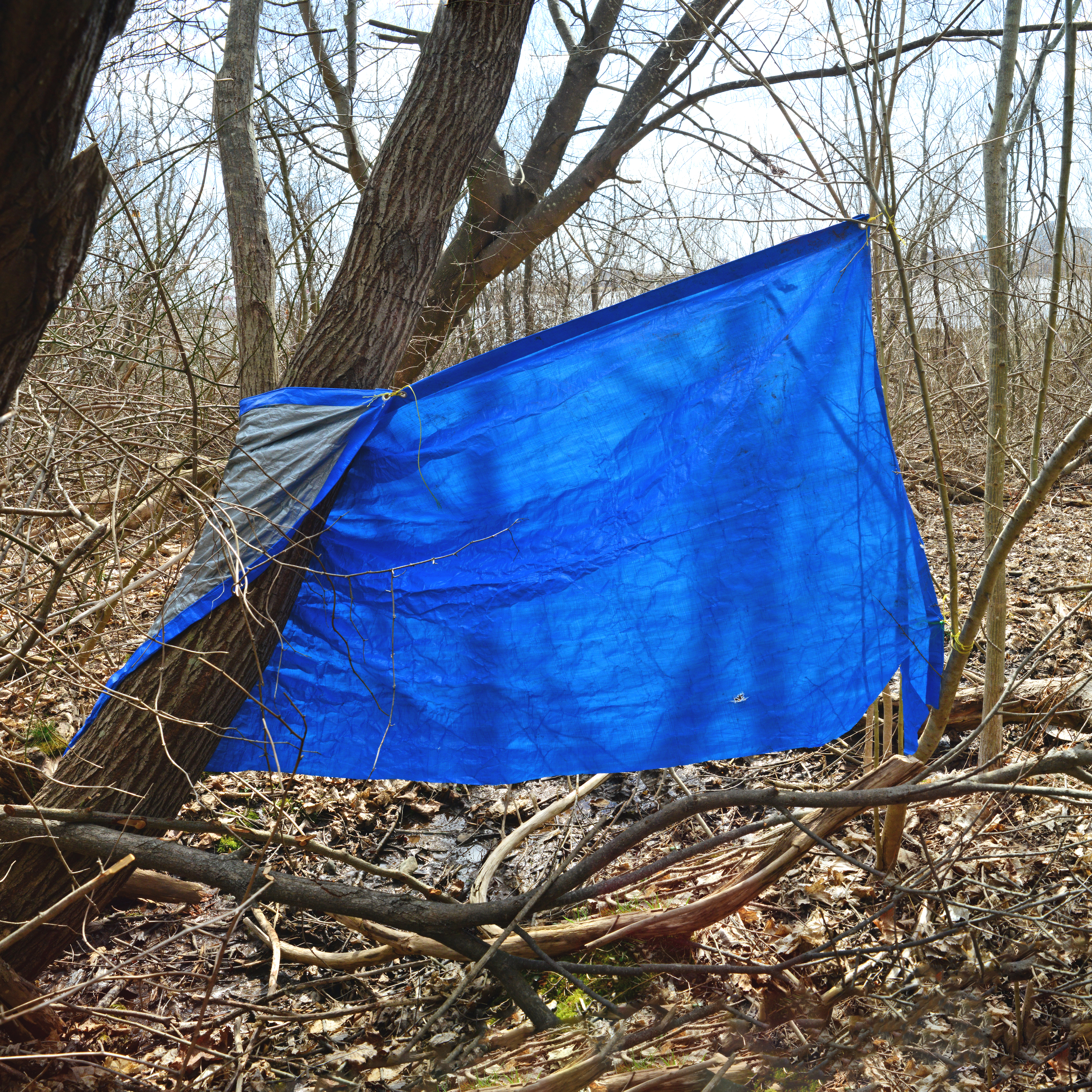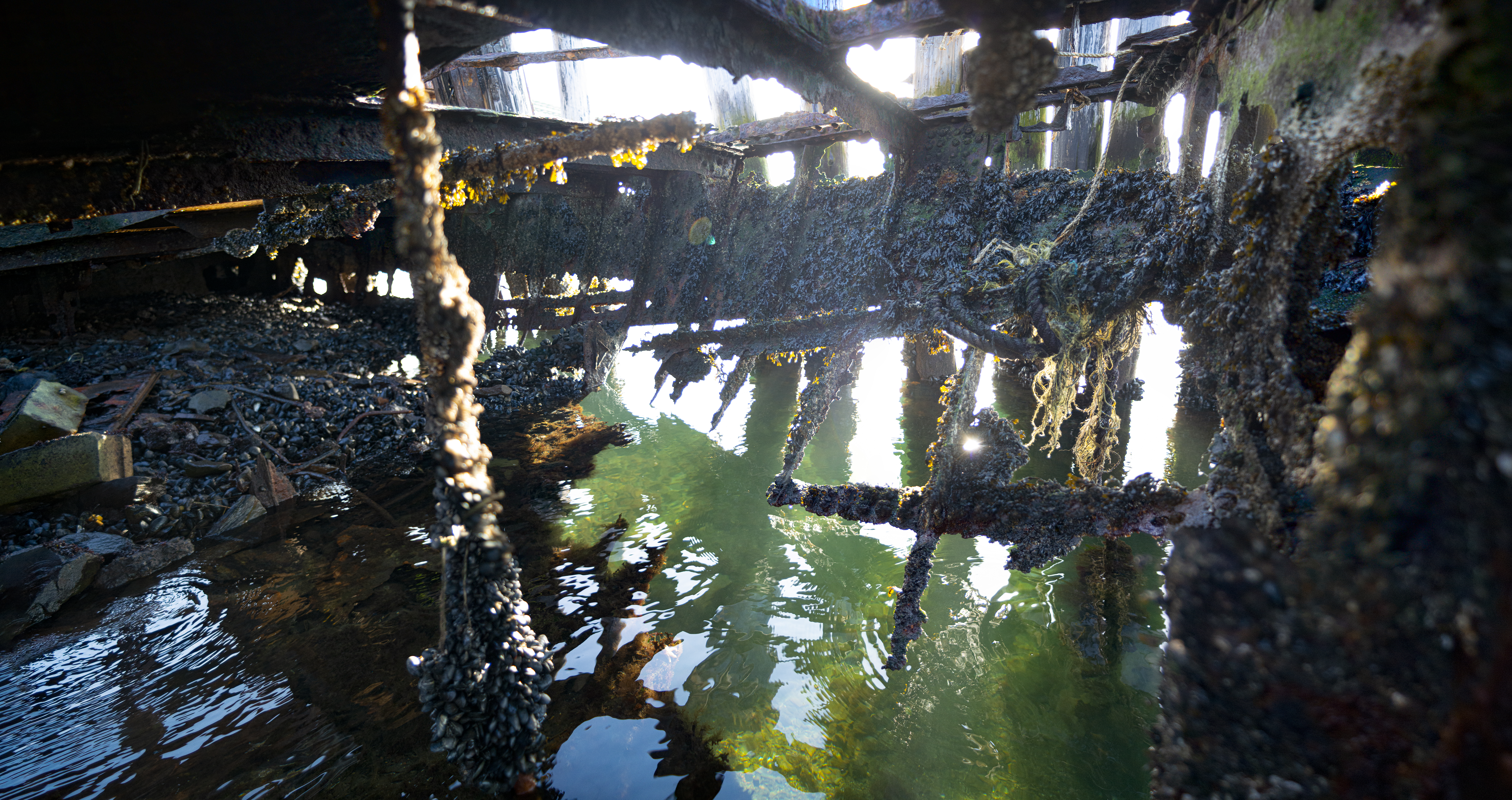Cyril Was Here visualizes the derelict SS Daisy shipwreck and the literal and symbolic connections this anomaly of seafaring history has with the escalating crisis of homelessness. The work takes an atypical approach in documenting homelessness, by using photogrammetry software that is generally employed for land survey and digital mapping and instead applies it to record the temporary shelter of a homeless man. When I met Cyril in the summer of 2020, he was living adjacent to and within the SS Daisy wreck, and although living within a 110-year-old abandoned fishing vessel is uncommon, Cyril’s experience of homelessness is sadly not unique within our community. This difficult juxtaposition between the beautiful decay of a shipwreck and the lives of many threatened by homelessness within our community is the primary context of this work.
In viewing homeless environments before I started making pictures for this series, I noted that the response of non-homeless persons was to avoid the homeless instinctively: by crossing the street to evade; refusing to make eye contact, rejecting efforts to communicate. The homeless live in an expanding universe, mostly without meaningful contact with the other world, almost made invisible by default. Oftentimes the communication they do have with the other world presents itself in the form of written pleas for help on cardboard signs and mark making with whatever is available. Making our mark is a singularly human trait - a need for permanence in value systems, social structure, and in our data – it is a quality that doesn't go unnoticed in the arts. This tendency is often riffed on, by making art that will degrade in front of our eyes, such as Zoe Leonard’s Strange Fruit, wherein she sewed skins of fruit together and chose not to preserve the work, with the intention of signaling the impermanent and fragile nature of life within the AIDS epidemic. Whether by choice or by accident, the traces we leave are the signals of life we long for others to know we occupied - we existed - we desired for our memory to live on.
>
>



As a result of meeting and talking with Cyril, I began to view the many makeshift homeless campsites in the area, the plywood/tarp structures, and the iron shipwreck as existing in an intermediate state, between the coming together and the scattering apart. Much like the way I came to know Cyril and the way he vanished without a trace; apart from a large section of plywood leftover from his shelter, on which he wrote his name. Considering this and our chance meeting, the Daisy was profoundly changed in my eyes, from simply being a disintegrating shipwreck to also being the place of shelter. Yet Cyril was indeed gone, the objects that had come together to form his refuge were disappearing traces of his existence contained within the Daisy, and I was compelled to document the unseen, to treasure and grieve a life I had no record of, apart from a name. And I was left contemplating all the while as Frederick Sommer said “…Life itself is not the reality. We are the ones who put life into stones and pebbles”, and that my privileged perspective as an artist and viewpoint on homelessness could equally glaze and open eyes. I know that the bitter and honest reality of homelessness and of these living conditions can be linked visually with the erosion of societal safety nets, poverty, food insecurity, a lack of affordable housing, racism, colonialism, criminalization, homophobia, transphobia, the stigma around the use of alcohol & substances, challenges with mental health and so many other barriers put in place by society. And my goal in considering these insurmountable obstacles is that the viewer will reflect on the symbolic link between the incomplete eroding style of the dense cloud photogrammetric models, the abstracted vanishing images of the SS Daisy, and that these visuals will reiterate the slippage and gradual decay of not only a shipwreck but so too the lives of many homeless who slip through the cracks of society on the daily. Like the many grains of sand-like pixels that the images in this work are comprised of.
